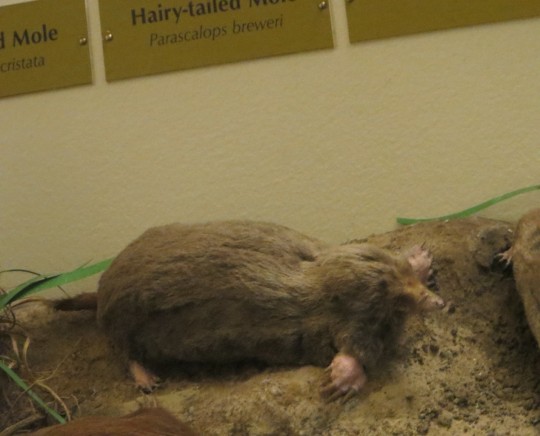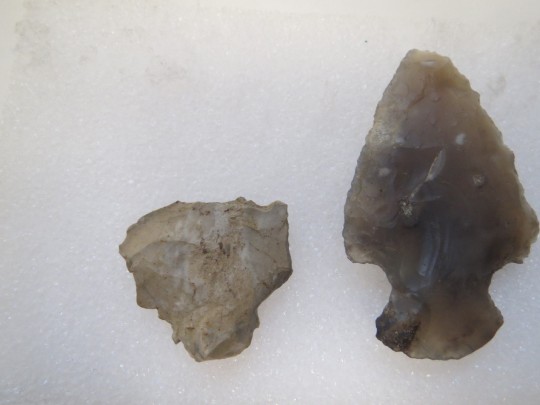By Patrick McShea

Do wild creatures ever participate in gift giving? Their very presence can be thought of as a gift, of course. Think only of what the chorus of bird song adds to a spring dawn, or how a trotting red fox transforms a frost white meadow.
One spring morning more than a decade ago, however, I found something in the freshly churned soil of a mole hill that I’ve come to regard as a kind of peace offering gift. As I used my right foot to spread the damp earth flat, a sliver of pale gray flashed briefly in the otherwise peanut butter colored pile. Bending down to investigate, I found an irregularly-shaped, quarter-sized piece of chert that a quick spit wash and pants wipe revealed to be the lower portion of an arrowhead.

The broken artifact was certainly an unintentional gift, mere tunnel debris to be pushed skyward by the shovel-like front paws and sharply pointed nose of the creature who last encountered it. For me, however, the tool fragment has become a magical kind of time capsule, holding without revealing information about its ancient creator, its use, and eventual breakage.
Since that morning I’ve looked patiently but without success for the arrowhead’s other half in every mole hill I’ve smoothed out. I’ve also spent a lot of time wondering about what the arrowhead maker called the unusual mammal whose tunnel making is the basis for our acquaintance.
Patrick McShea works in the Education and Visitor Experience department of Carnegie Museum of Natural History. Museum employees are encouraged to blog about their unique experiences and knowledge gained from working at the museum.
